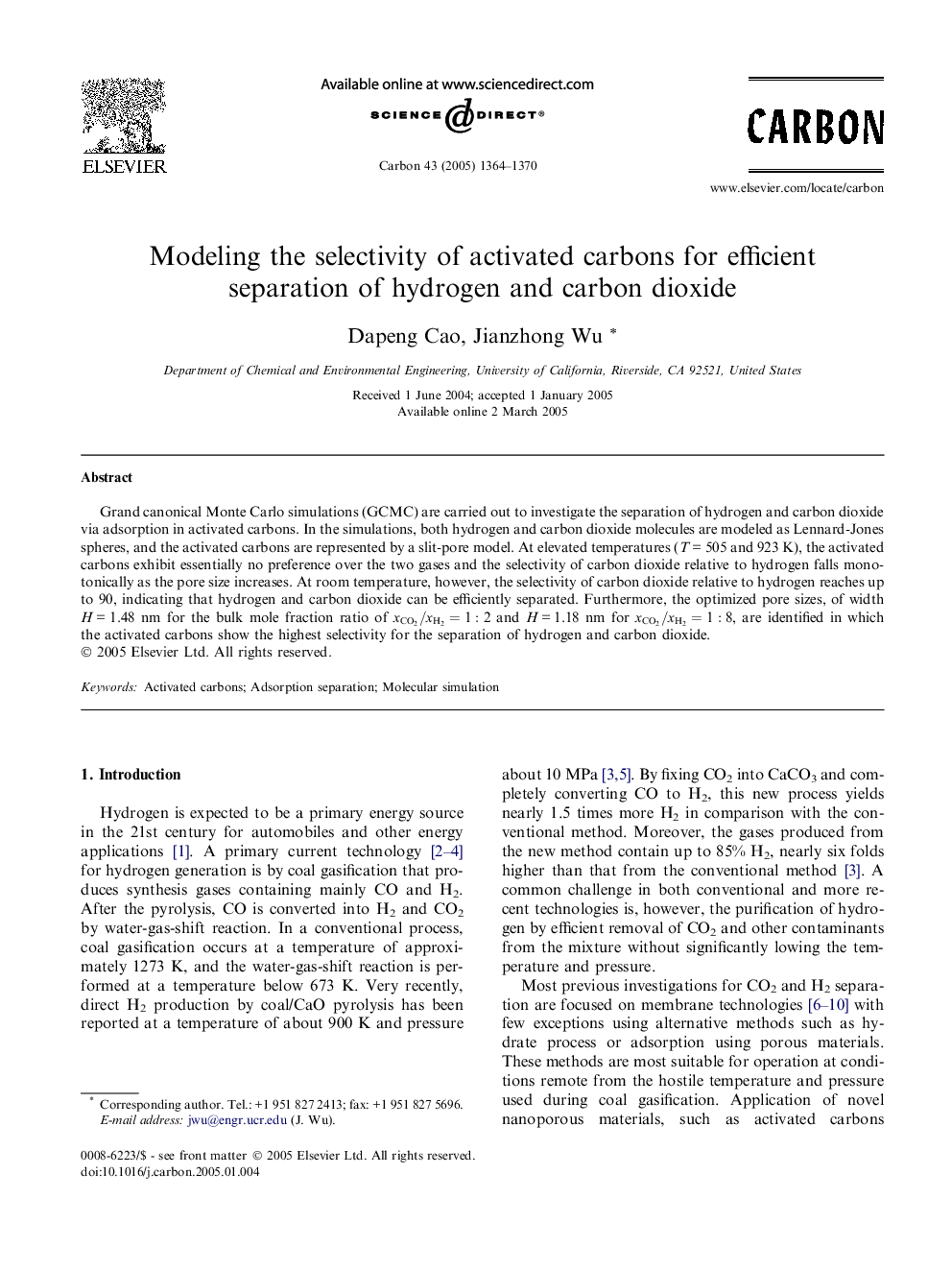| کد مقاله | کد نشریه | سال انتشار | مقاله انگلیسی | نسخه تمام متن |
|---|---|---|---|---|
| 10611274 | 986056 | 2005 | 7 صفحه PDF | دانلود رایگان |
عنوان انگلیسی مقاله ISI
Modeling the selectivity of activated carbons for efficient separation of hydrogen and carbon dioxide
دانلود مقاله + سفارش ترجمه
دانلود مقاله ISI انگلیسی
رایگان برای ایرانیان
کلمات کلیدی
موضوعات مرتبط
مهندسی و علوم پایه
مهندسی انرژی
انرژی (عمومی)
پیش نمایش صفحه اول مقاله

چکیده انگلیسی
Grand canonical Monte Carlo simulations (GCMC) are carried out to investigate the separation of hydrogen and carbon dioxide via adsorption in activated carbons. In the simulations, both hydrogen and carbon dioxide molecules are modeled as Lennard-Jones spheres, and the activated carbons are represented by a slit-pore model. At elevated temperatures (TÂ =Â 505 and 923 K), the activated carbons exhibit essentially no preference over the two gases and the selectivity of carbon dioxide relative to hydrogen falls monotonically as the pore size increases. At room temperature, however, the selectivity of carbon dioxide relative to hydrogen reaches up to 90, indicating that hydrogen and carbon dioxide can be efficiently separated. Furthermore, the optimized pore sizes, of width HÂ =Â 1.48 nm for the bulk mole fraction ratio of xCO2/xH2=1:2 and HÂ =Â 1.18 nm for xCO2/xH2=1:8, are identified in which the activated carbons show the highest selectivity for the separation of hydrogen and carbon dioxide.
ناشر
Database: Elsevier - ScienceDirect (ساینس دایرکت)
Journal: Carbon - Volume 43, Issue 7, June 2005, Pages 1364-1370
Journal: Carbon - Volume 43, Issue 7, June 2005, Pages 1364-1370
نویسندگان
Dapeng Cao, Jianzhong Wu,